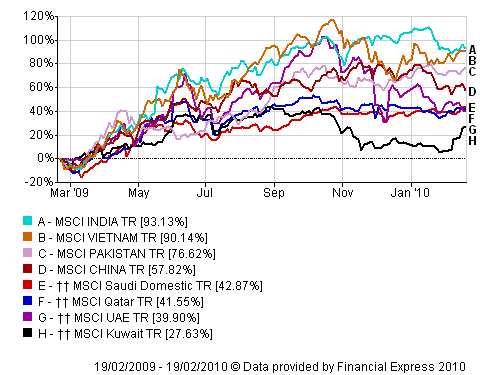Many foreign stocks trading as ADRs in the US markets have above average dividend yields. The following 11 stocks pay dividends of over 5% as of the February 26, 2010:
1. YPF SA(YPF)
Current Dividend Yield: 7.85%
Country: Argentina
Sector: Integrated Oil & Gas
2. TOTAL (TOT)
Current Dividend Yield: 6.09%
Country: France
Sector: Integrated Oil & Gas
3. Philippine Long Distance Telephone Co(PHI)
Current Dividend Yield: 5.75%
Country: Philippines
Sector: Telecom
4. ENI Spa(E)
Current Dividend Yield: 6.09%
Country: Italy
Sector: Integrated Oil & Gas
5. E.ON AG (OTC: EONGY)
Current Dividend Yield: 5.63%
Country: Germany
Sector: Electric Utility
6. Fortum(OTC: FOJCY)
Current Dividend Yield: 5.16%
Country: Finland
Sector: Electric Utility
7. Ecopetrol (EC)
Current Dividend Yield: 5.57%
Country: Colombia
Sector: Integrated Oil & Gas
8. Portugal Telecom (PT)
Current Dividend Yield: 7.10%
Country: Portugal
Sector:Â Telecom
9. National Australia Bank Ltd(OTC: NABZY)
Current Dividend Yield: 5.60%
Country: Australia
Sector: Banking
10. Banco De Chile (BCH)
Current Dividend Yield: 6.29%
Country: Chile
Sector: Banking
11. Veolia Environnement(VE)
Current Dividend Yield: 5.16%
Country: France
Sector: Environmental Management Services
National Australia Bank trades on the OTC markets. The stock has more than doubled from its 52-week lows. Finland-based electric utility Fortum is a consistent high dividend paying company. Fortum’s average dividend payout ratio of 50% to 60%. Last year, sales totalled EUR 5.4 billion and the operating profit was EUR 1.8 billion. E.ON AG of Germany is another top electric utility that offers stable and consistent growth.
Note: The data shown here are known to be accurate from the sources used. Please make your own due diligence before making any investment decisions.
